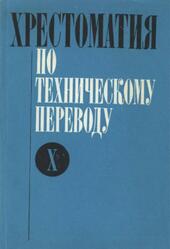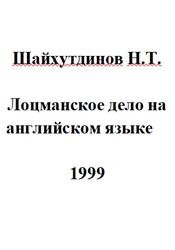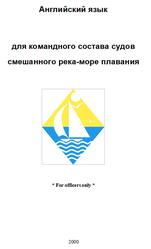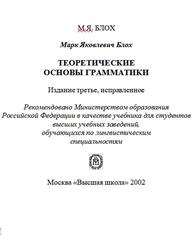Данное учебное пособие предназначено для организации и проведения практических занятий и организации самостоятельной работы по дисциплинам, связанным с развитием навыков коммуникативного чтения на английском языке при изучении профессионально ориентированных текстов обучающихся по направлениям подготовки 41.00.00, 46.00.00. 51.00.00. Пособие подготовлено в соответствии с требованиями ФГОС ВО. рабочими программами и содержит комплекс учебных материалов, способствующих актуализации и развитию умений и навыков студентов по применению изученного языкового материала в практической деятельности, пониманию языковых явлений, самостоятельного анализа языковых фактов. Пособие рекомендуется преподавателям и обучающимся организаций высшего образования с уровнем языковой подготовки Pre-Intermediate и выше.

The Russian Empire.
The Russian Empire, historical empire was founded on November 2, 1721, when the Russian Senate conferred the title of emperor of all Russia upon Peter I. The abdication of Nicholas II on March 15, 1917, marked the end of the empire and the end of Romanovs’ reign.
The empire had its genesis when the Russian nobility sought a new bloodline for its monarchy. They found it in Michael Romanov, a young boyar (nobleman), who was elected tsar in 1613. The early Romanovs were weak monarchs. Crowned at age 17, Michael shared the throne during the crucial years of his reign with his father, the patriarch Philaret. Michael’s son Alexis came to the throne in 1645 at age 16; he was much under the influence first of Boris Ivanovich Morozov and then of the patriarch Nikon. Fyodor III, a boy of just 14 at the time of his accession in 1676, also yielded much power to favourites. In spite of this, all three were popular tsars who left behind a good reputation among the people and whom the Slavophiles of the 19th century idealized as model Russian monarchs. Government during this period usually rested in the hands of individuals who for one reason or another exercised personal influence over the tsars. Popular dissatisfaction usually turned against these favourites rather than the tsar himself, such as during the urban uprisings (1648–50) that led to the exile of Morozov, and the great peasant rebellion (1670–71) led by the Cossack Stenka Razin.
Contents.
Introduction.
Key facts on Russian history between 1670 and 1917.
Lesson 1.
Text A. The Russian Empire.
Text B. The Romanov Dynasty: Tracing the Path of Triumph and Downfall.
Lesson 2.
Text A. Peter the Great: the emergence of the Russian Empire.
Text B. The main imperial palace.
Lesson 3.
Text A. Catherine I: the first Russian Empress.
Text B. The Supreme State Institution of Russia.
Lesson 4.
Text A. Anna Ioannovna.
Text B. Arts and Culture.
Lesson 5.
Text A. Elizabeth of Russia: the right heir to the throne.
Text B. Sentences to Death.
Lesson 6.
Text A. Catherine the Great: the rise of the Empire.
Text B. Achievements in the Foreign Policy.
Lesson 7.
Text A. Paul I: «The Highest Manifesto».
Text B. Rules and changes under Paul I.
Lesson 8.
Text A. Alexander I: the great winner.
Text B. Russia versus France.
Lesson 9.
Text A. The Patriotic War of 1812.
Text B. The Battle of Borodino.
Lesson 10.
Text A. Nicholas I: the unexpected heir.
Text B. Women's rights.
Lesson 11.
Text A. Alexander II: the liberator.
Text B. Abolition of serfdom.
Lesson 12.
Text A. Alexander III: the peacemaker.
Text B. The era of «small deeds».
Lesson 13.
Text A. Nicholas II: the last Emperor.
Text B. Tsarina Alexandra.
Lesson 14.
Text A. Peasants in Imperial Russia.
Text B. The Russian Orthodoxy in 1905 – 1907.
Lesson 15.
Text A. Russia in 1900 – 1914.
Text B. The First World War.
Lesson 16.
Text A. The Russian Revolution in 1917.
Text B. The Abdication of Nicholas II (1917).
Lesson 17.
Text A. The end of the Russian Empire.
Text B. The Provosoinal Government.
Texts for additional reading.
Historical Background.
Romanov’s Dinasty.
Chronology of Historical Events in Imperial Russia.
Vocabulary.
References.
Бесплатно скачать электронную книгу в удобном формате, смотреть и читать:
Скачать книгу History of Imperial Russia, Учебное пособие по обучению навыкам коммуникативного чтения, Фахрутдинова А.В., Губайдуллина Р.Н., 2022 - fileskachat.com, быстрое и бесплатное скачивание.
Скачать pdf
Ниже можно купить эту книгу, если она есть в продаже, и похожие книги по лучшей цене со скидкой с доставкой по всей России.Купить книги
Скачать - pdf - Яндекс.Диск.
Дата публикации:
Хештеги: #учебник по английскому языку :: #английский язык :: #Фахрутдинова :: #Губайдуллина
Смотрите также учебники, книги и учебные материалы:
Следующие учебники и книги:
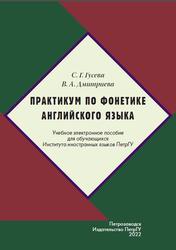 Практикум по фонетике английского языка, Гусева С.Г., Дмитриева В.А., 2022 — Пособие содержит материалы теоретического и практического характера, предназначенные для студентов младших курсов ИИЯ ПетрГУ, обучающихся по направлениям подготовки бакалавриата Лингвистика … Книги по английскому языку
Практикум по фонетике английского языка, Гусева С.Г., Дмитриева В.А., 2022 — Пособие содержит материалы теоретического и практического характера, предназначенные для студентов младших курсов ИИЯ ПетрГУ, обучающихся по направлениям подготовки бакалавриата Лингвистика … Книги по английскому языку Teacher s Guide for English For Tech, Gandrabura A. — Before you dive in and start crafting your first English For Tech lesson, please be reminded of the following. You … Книги по английскому языку
Teacher s Guide for English For Tech, Gandrabura A. — Before you dive in and start crafting your first English For Tech lesson, please be reminded of the following. You … Книги по английскому языку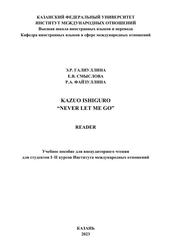 Kazuo Ishiguro, “Never Let Me Go”, Reader, Учебное пособие для внеаудиторного чтения для студентов I-II курсов Института международных отношений, Галиуллина Э.Р., Смыслова Е.В., Файзуллина Р.А., 2023 — Данное учебное пособие предназначено для вне аудиторного чтения и работы на занятиях со студентами I II курсов Института международных отношений … Книги по английскому языку
Kazuo Ishiguro, “Never Let Me Go”, Reader, Учебное пособие для внеаудиторного чтения для студентов I-II курсов Института международных отношений, Галиуллина Э.Р., Смыслова Е.В., Файзуллина Р.А., 2023 — Данное учебное пособие предназначено для вне аудиторного чтения и работы на занятиях со студентами I II курсов Института международных отношений … Книги по английскому языку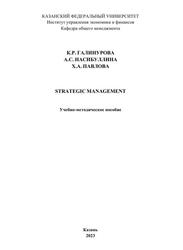 Strategic management, Учебно-методическое пособие, Галинурова К.Р., Насибуллина А.С., Павлова Х.А., 2023 — The workshop contributes to the systematic study of the methods of strategic management by students studying in the direction 38.03.02 … Книги по английскому языку
Strategic management, Учебно-методическое пособие, Галинурова К.Р., Насибуллина А.С., Павлова Х.А., 2023 — The workshop contributes to the systematic study of the methods of strategic management by students studying in the direction 38.03.02 … Книги по английскому языку
Предыдущие статьи:
 Художественно-архитектурный и реставрационный дискурс английского языка, Евсеев А.Б., 2023 — Состоит из основного раздела и приложений. Основной раздел включает тексты по специальностям с предречевыми заданиями, упражнениями для контроля понимания прочитанного … Книги по английскому языку
Художественно-архитектурный и реставрационный дискурс английского языка, Евсеев А.Б., 2023 — Состоит из основного раздела и приложений. Основной раздел включает тексты по специальностям с предречевыми заданиями, упражнениями для контроля понимания прочитанного … Книги по английскому языку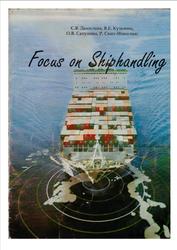 Focus on Shiphandling, Деловые темы для учащихся судоводительской специальности, Данилова С.В., Кузьмин В.Е., Сапунова О.В., Синт-Николаас Р., 2010 — Учебное пособие предназначено для развития коммуникативных навыков и охватывает проблематику управления судном в ситуациях лоцманской проводки, постановки на якорь, буксировки … Книги по английскому языку
Focus on Shiphandling, Деловые темы для учащихся судоводительской специальности, Данилова С.В., Кузьмин В.Е., Сапунова О.В., Синт-Николаас Р., 2010 — Учебное пособие предназначено для развития коммуникативных навыков и охватывает проблематику управления судном в ситуациях лоцманской проводки, постановки на якорь, буксировки … Книги по английскому языку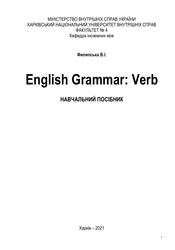 English grammar, Филипська В.І., 2021 — Пропонований посібник складено відповідно до Програм навчальних дисциплін Іноземна мова та Іноземна мова за професійним спрямуванням . Посібник має на … Книги по английскому языку
English grammar, Филипська В.І., 2021 — Пропонований посібник складено відповідно до Програм навчальних дисциплін Іноземна мова та Іноземна мова за професійним спрямуванням . Посібник має на … Книги по английскому языку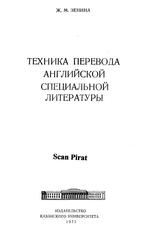 Техника перевода английской специальной литературы, Зенина Ж.М., 1971 — Пособие ставит задачей дать прочные навыки в овладении особенностями грамматики научно-технического стиля, систематические и глубокие знания по технике перевода специального … Книги по английскому языку
Техника перевода английской специальной литературы, Зенина Ж.М., 1971 — Пособие ставит задачей дать прочные навыки в овладении особенностями грамматики научно-технического стиля, систематические и глубокие знания по технике перевода специального … Книги по английскому языку

